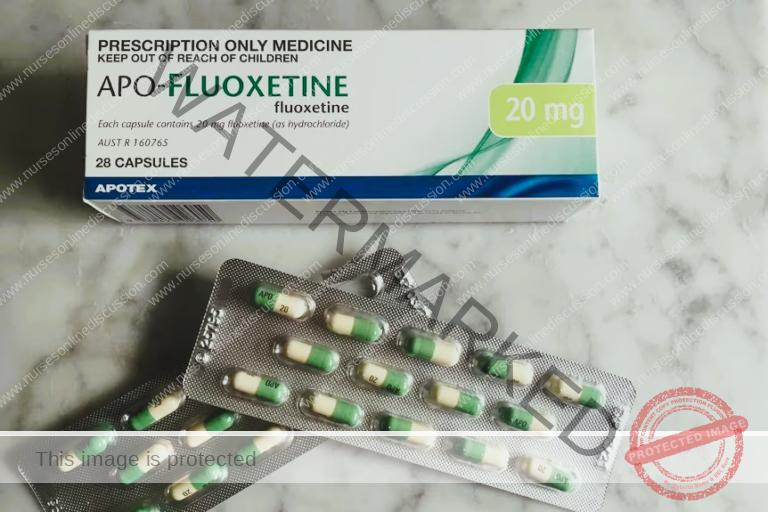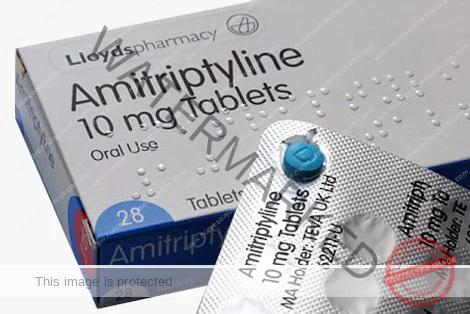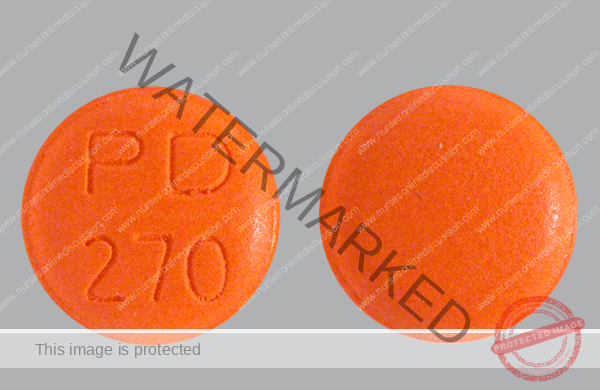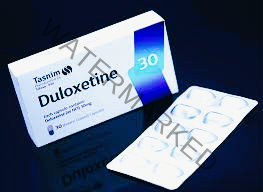Psychopharmacology
Subtopic:
Antidepressants

Antidepressants represent a class of medications primarily utilized in the treatment of clinical depression.
More broadly, antidepressants are a category of drugs prescribed for major depressive disorder, various anxiety conditions, persistent pain syndromes, and addiction management. They are often described as mood enhancers. The first antidepressant agent, a monoamine oxidase inhibitor, was discovered by Crane in 1957 and Kline in 1958.
Depression, clinically known as major depressive disorder, is characterized by intense feelings of sadness and a sense of hopelessness. Individuals experiencing depression may suffer from episodes that can last for days or extend to weeks.
Mechanism of Action
Antidepressants function by inhibiting the reuptake of specific neurotransmitters, notably serotonin and noradrenaline (norepinephrine). By preventing the reabsorption of these neurotransmitters in the brain, antidepressants effectively increase their concentration in the synaptic cleft. This elevation helps restore neurotransmitter levels to a normal range, leading to a positive therapeutic effect. It’s important to note that antidepressants typically require 2-3 weeks of consistent use before their therapeutic benefits become noticeable.
Common Indications
Antidepressants are generally prescribed for various conditions, including:
Depressive Disorders:
Psychotic depression (major depression with psychotic features)
Agitated depression
Neurotic depression
Reactive depression
Atypical depression
Conditions with suicidal ideation
Unipolar depression
Other Potential Uses:
Alcohol dependence
Sleep disturbances, particularly early morning awakening where individuals feel unrefreshed, lack energy, and experience diurnal mood variation (feeling weakest upon waking).
Eating disorders such as anorexia nervosa (characterized by appetite but deliberate food refusal) and bulimia nervosa (episodes of excessive eating).
Chronic physical complaints without identified medical cause.
Nocturnal enuresis (bedwetting) in the absence of underlying physical pathology, often using low doses.
Panic disorder
Agoraphobia, social phobia, school phobia, and other phobic disorders.
Obsessive-compulsive disorder (OCD), both with and without comorbid depression.
Migraine headaches
Attention deficit hyperactivity disorder (ADHD)
Classes of Antidepressants
Antidepressant medications can be categorized into several main groups based on their primary mechanisms of action:
Serotonin Reuptake Inhibitors (Selective)
Tricyclic Antidepressants
Tetracyclic Antidepressants
Monoamine Oxidase Inhibitors (MAOIs)
Serotonin and Norepinephrine Reuptake Inhibitors (SNRIs)
SELECTIVE SEROTONIN REUPTAKE INHIBITORS (SSRIs)
SSRIs are a class of antidepressants designed to target and primarily affect serotonin neurotransmitter systems in the brain. Their mechanism is characterized by a high degree of selectivity for serotonin receptors, distinguishing them from earlier antidepressant classes. This targeted action contributes to a more favorable side effect profile compared to some older antidepressants, as they are less likely to interact with other neurotransmitter systems that can cause undesirable cholinergic or other off-target effects. Due to their generally improved tolerability and safety, SSRIs are frequently considered as a first-line treatment option for depression and related conditions.

1. Fluoxetine (Prozac)
Dosage: Typically administered at 20mg to 60mg once daily, preferably in the morning (‘mane’).
Indications:
Effective in managing Obsessive-Compulsive Disorder (OCD).
Used in the treatment of Depression.
Indicated for Premenstrual Dysphoric Disorder (PMDD).
Treatment of Bulimia Nervosa.
Side Effects:
May cause nausea.
Potential for weight loss.
Can induce agitation.
May lead to dry mouth.
Possible constipation.
May result in insomnia.
Can cause headaches.
Risk of sexual dysfunction.
May cause nervousness.
Contraindications:
Individuals with hepatic or renal impairment.
Not recommended during pregnancy.
2. Paroxetine (Paxil, Aropax)
Dosage: Generally prescribed at 20mg to 60mg once daily, typically in the evening (‘nocte’).
Indications:
Used for treating Depression.
Management of various Anxiety disorders.
Effective in treating Obsessive-Compulsive Disorder (OCD).
Indicated for Post-Traumatic Stress Disorder (PTSD).
Treatment of Social Phobia (Social Anxiety Disorder).
Management of Panic Disorder.
Side Effects:
May cause sedation.
Potential for dry mouth.
Possible constipation.
Contraindications:
Similar to fluoxetine, caution advised for individuals with hepatic or renal impairment and during pregnancy.
3. Sertraline (Zoloft)
Dosage: Typical daily dosage ranges from 50mg to 200mg.
Indications:
Effective in the management of Post-Traumatic Stress Disorder (PTSD).
Used in the treatment of Obsessive-Compulsive Disorder (OCD).
Indicated for Depression.
Management of Panic Disorders.
Used in the treatment of Premature Ejaculation.
Indicated for Premenstrual Dysphoric Disorder (PMDD).
Side Effects:
May induce nausea.
Potential for anorexia (loss of appetite).
Possible diarrhea.
Contraindications:
Contraindications are generally consistent with those of fluoxetine, particularly concerning hepatic and renal conditions.
TRICYCLIC ANTIDEPRESSANTS (TCAs)
Mode of Action:
Tricyclic antidepressants are effectively absorbed when taken orally. Their primary mechanism involves enhancing the concentration of certain neurotransmitters in the brain. Specifically, they increase the availability of biogenic amine neurotransmitters, such as noradrenaline (norepinephrine) and serotonin (5-hydroxytryptamine or 5-HT), within the synaptic cleft. This is achieved by blocking the reuptake of these neurotransmitters back into the presynaptic neuron from which they were released.
TCAs are characterized by a long half-life, which allows for once-daily dosing to maintain therapeutic levels. However, it’s important to note that the onset of their antidepressant effects is relatively slow and can vary among individuals. It typically takes between 2 to 4 weeks of consistent treatment before a noticeable improvement in mood is observed.
Examples of Tricyclic Antidepressants (TCAs):

Amitriptyline (Laroxyl)
Characterized by significant sedative properties.
Typically initiated at low dosages, with gradual increases as needed.
Often administered as a single dose in the evening (‘nocte’).
Standard starting dosage range: 25-75mg nightly.
Maximum recommended dose: up to 200mg nightly.
Particularly effective in treating agitated depression characterized by pronounced restlessness.
Imipramine (Tofranil)
Presents less sedative effects compared to amitriptyline.
Dosage regimen is comparable to amitriptyline.
Considered highly beneficial for depressive conditions marked by psychomotor retardation (slowed physical and mental processes).
Clomipramine (Anafranil)
Primarily indicated for obsessive-compulsive neurosis (OCD), especially when accompanied by underlying depression.
Starting dose: 50mg, with gradual increments as clinically appropriate, administered nightly (‘nocte’).
Maximum recommended dose: up to 250mg nightly.
TETRACYCLIC ANTIDEPRESSANTS (TetCAs)

Example: Maprotiline (Ludiomil)
Classified as a tetracyclic antidepressant with a notable advantage in treating both agitated and retarded depression.
Typical dosage range: 50mg-75mg, administered two or three times daily (b.d or t.d.s) over a 24-hour period.
Side Effects of Tricyclic and Tetracyclic Antidepressants:
These classes of antidepressants share a range of potential side effects, including:
Mood and Psychiatric Effects: Induction of mania in susceptible individuals.
Cardiovascular Effects:
Mild orthostatic hypotension (drop in blood pressure upon standing).
Tachycardia (elevated heart rate).
Cardiac arrhythmias (irregular heartbeats).
Potential for heart block (disruption of electrical signals in the heart).
Central Nervous System Effects:
Sedation (drowsiness).
Anticholinergic Effects:
Dry mouth.
Blurred vision.
Constipation.
Gastrointestinal Effects:
Nausea and vomiting.
Metabolic Effects:
Weight gain.
Hematological Effects:
Bone marrow depression (reduced production of blood cells).
Dermatological Effects:
Urticaria (skin rash).
Sexual Dysfunction.
These side effects can be broadly categorized by their pharmacological mechanisms:
Antihistaminic Effects: Contribute to sedation and weight gain.
Anticholinergic Effects: Result in dry mouth, dry eyes, and constipation.
Anti-adrenergic Effects: Lead to orthostatic hypotension, sedation, and sexual dysfunction.
MONOAMINE OXIDASE INHIBITORS (MAOIs)
MAOIs represent the earliest class of antidepressants developed. However, their current clinical use is limited due to a higher incidence of significant side effects. They have largely been superseded by tricyclic antidepressants and selective serotonin reuptake inhibitors, which generally offer a more favorable safety profile.
Indications:
MAOIs may be considered in specific scenarios, including:
Depressive neurosis.
Anxiety disorders.
Phobic states.
Depressive illnesses that have proven unresponsive to other antidepressant therapies.
Mechanism of Action:
MAOIs function by increasing the concentration of monoamine neurotransmitters in the brain, particularly noradrenaline (norepinephrine) and serotonin. This is achieved by inhibiting the enzyme monoamine oxidase, which is responsible for breaking down these neurotransmitters.

1. Phenelzine (Nardil)
Dosage: Typically administered at dosages ranging from 15mg to 30mg, two or three times daily (b.i.d./t.d.s.). The maximum daily dose should not exceed 60mg within a 24-hour period.
Indications:
Management of anxiety disorders.
Treatment of obsessive-compulsive disorder.
Side Effects:
Potential for weight gain.
May induce hypotension (low blood pressure).
Possible oedema (swelling).
Can cause nervousness or agitation.
Contraindications:
Individuals with diabetes mellitus.
Patients with cardiovascular system (CVS) disease.
Those with liver disease.
2. Isocarboxazid (Marplan)
Dosage: The recommended dosage is between 20mg and 60mg daily, which can be given as a single dose or divided into multiple administrations.
Indications:
Similar to phenelzine, it is used for anxiety disorders.
Also indicated for obsessive-compulsive disorder.
Side Effects:
May result in weight loss in some individuals.
Potential for hypotension.
Can cause drowsiness or sedation.
Risk of sexual dysfunction.
Possible induction of mania in susceptible individuals.
May lead to jaundice (yellowing of skin or eyes).
Can cause nausea.
Contraindications:
Contraindications are similar to phenelzine, including diabetes, cardiovascular disease, and liver disease.
3. Tranylcypromine (Parnate)
Dosage: Typically administered at 20mg to 40mg twice daily (b.i.d.).
Side Effects:
May cause insomnia (difficulty sleeping).
Weight gain is a potential side effect, although it is less commonly observed compared to some other MAOIs.
Contraindications:
Contraindications are consistent with phenelzine and isocarboxazid, encompassing diabetes, cardiovascular disease, and liver disease.
Monoamine Oxidase Inhibitors (MAOIs) Interactions
It’s critical to be aware that Monoamine Oxidase Inhibitors (MAOIs) can interact adversely with certain foods and medications. These interactions can lead to serious health risks.
Hypertensive Crisis: A major concern with MAOIs is the potential for a hypertensive crisis, a dangerously high elevation in blood pressure that can be life-threatening. This critical condition can arise from the interaction between MAOIs and tyramine, a naturally occurring monoamine compound found in various foods, particularly those that are aged, fermented, smoked, or improperly stored. Examples of tyramine-rich foods include:
Aged cheese.
Yeast extracts, such as brewer’s yeast.
Alcoholic beverages, especially red wine.
Smoked or cured fish and meats.
Broad bean pods and fava beans.
Avocado.
Leftover or improperly stored foods where decomposition may have occurred.
Drug Interactions: MAOIs can also interact negatively with a range of medications, increasing the risk of adverse effects. Interacting drugs include:
Amphetamines.
Barbiturates.
Ephedrine.
Phenytoin.
Tricyclic antidepressants.
Note on Antidepressant Treatment Duration:
It is generally recommended that antidepressant medication be continued for a period of 6 months following noticeable improvement in symptoms. For instance, if a patient has been undergoing treatment for 3 months and shows significant progress, the medication should typically be maintained for an additional 6 months beyond this point, provided there is consistent adherence to the prescribed regimen.
SEROTONIN NOREPINEPHRINE REUPTAKE INHIBITORS (SNRIs)
Serotonin Norepinephrine Reuptake Inhibitors (SNRIs) operate by influencing chemical messengers, specifically neurotransmitters, which facilitate communication between nerve cells in the brain. Through this mechanism, SNRIs play a role in mood regulation and the alleviation of depressive symptoms.
Examples:
Duloxetine
Venlafaxine

Duloxetine (Cymbalta, Yentreve)
Duloxetine is classified as a serotonin-norepinephrine reuptake inhibitor (SNRI) antidepressant. It is believed to exert its therapeutic effects by increasing the levels of key mood-regulating chemicals, serotonin and noradrenaline (norepinephrine), within the brain.
Dosage: Typically initiated at a dose of 60mg taken orally once daily. Dosage may be adjusted upwards to a maximum of 120mg per day, administered once daily, based on individual patient needs and response.
Indications:
Management of depressive disorders.
Treatment of various anxiety conditions.
Alleviation of nerve pain, including conditions like fibromyalgia.
Used in the management of stress-related conditions.
Indicated for stress urinary incontinence specifically in women.
Side Effects:
Sleep disturbances, such as difficulty falling asleep or staying asleep.
Cephalalgia (headache).
Vertigo or lightheadedness.
Visual disturbances, including blurred vision.
Gastrointestinal issues, including constipation and diarrhea.
Nausea and emesis (vomiting).
Xerostomia (dry mouth).
Increased perspiration (sweating).
Fatigue and feelings of exhaustion.
Reduced appetite and potential weight loss.
Changes in libido, which may manifest as decreased sexual interest or erectile dysfunction and difficulties achieving orgasm.
Contraindications:
Pre-existing bleeding disorders.
Individuals with Type 1 or Type 2 diabetes mellitus.
Epilepsy: Use of SSRIs (though this mentions SSRIs, the original text mentions epilepsy as a contraindication for Duloxetine which is an SNRI, so retaining this caution is relevant), should be approached with caution and only if epilepsy is well-managed; medication may need to be discontinued if seizure control worsens.
Renal impairment or kidney disease.
Pre-existing heart conditions or thyroid disorders.
Angle-closure glaucoma.
Hepatic impairment or liver disease.
History of seizure disorders.
Get in Touch
(+256) 790 036 252
(+256) 748 324 644
Info@nursesonlinediscussion.com
Kampala ,Uganda
© 2025 Nurses online discussion. All Rights Reserved Design & Developed by Opensigma.co

